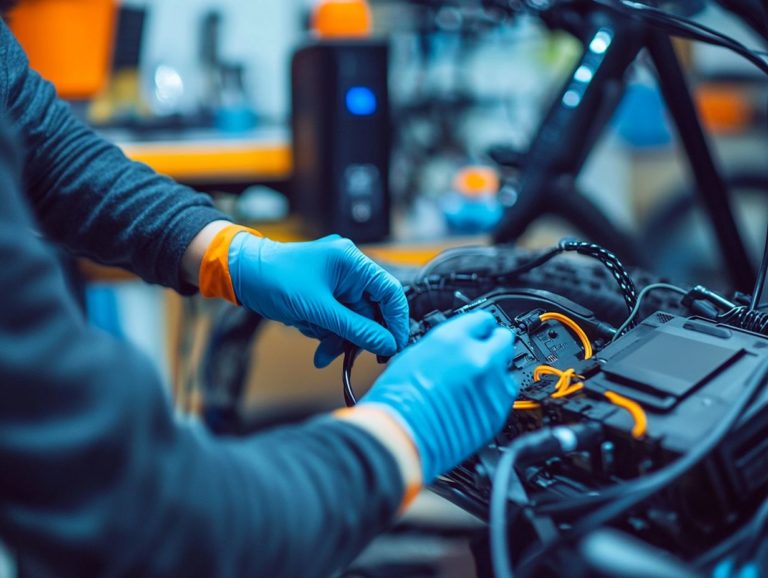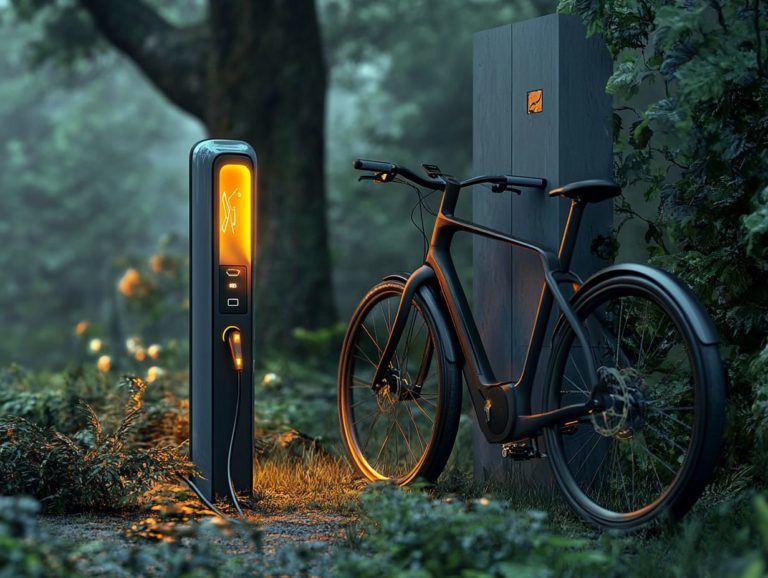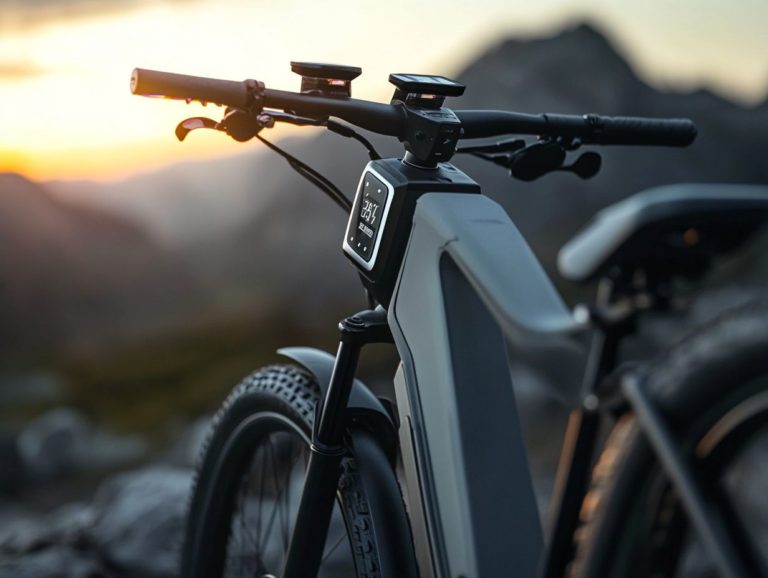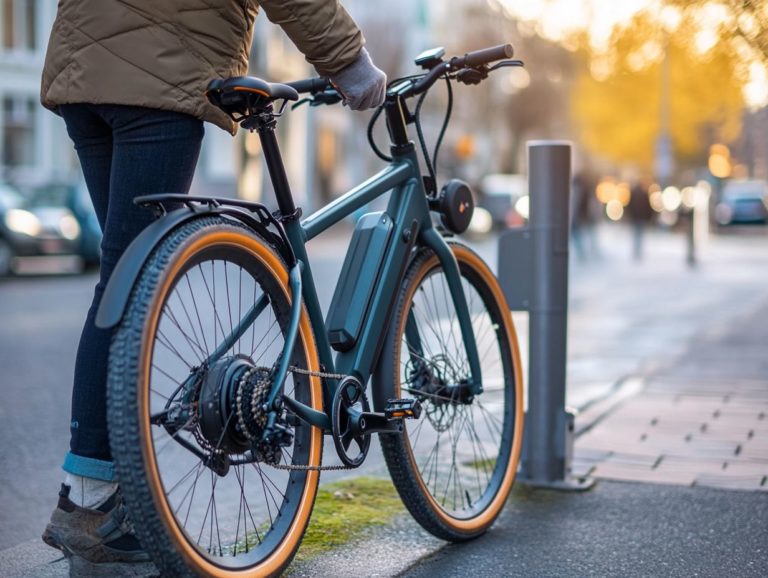What are the Most Common E-Bike Issues?
E-bikes, or electric bikes, have seen increased popularity, perfectly combining convenience and eco-friendliness for urban commuting.
However, like any vehicle, they bring their own set of challenges. From electrical and mechanical issues to battery concerns, these problems can disrupt your riding experience.
This article delves into various common troubles you might encounter with your e-bike, offers effective troubleshooting tips, and outlines essential preventative maintenance steps to keep your e-bike in optimal condition.
Ready to keep your ride smooth? Let s dive in!
Contents
An Overview of Key E-Bike Insights:
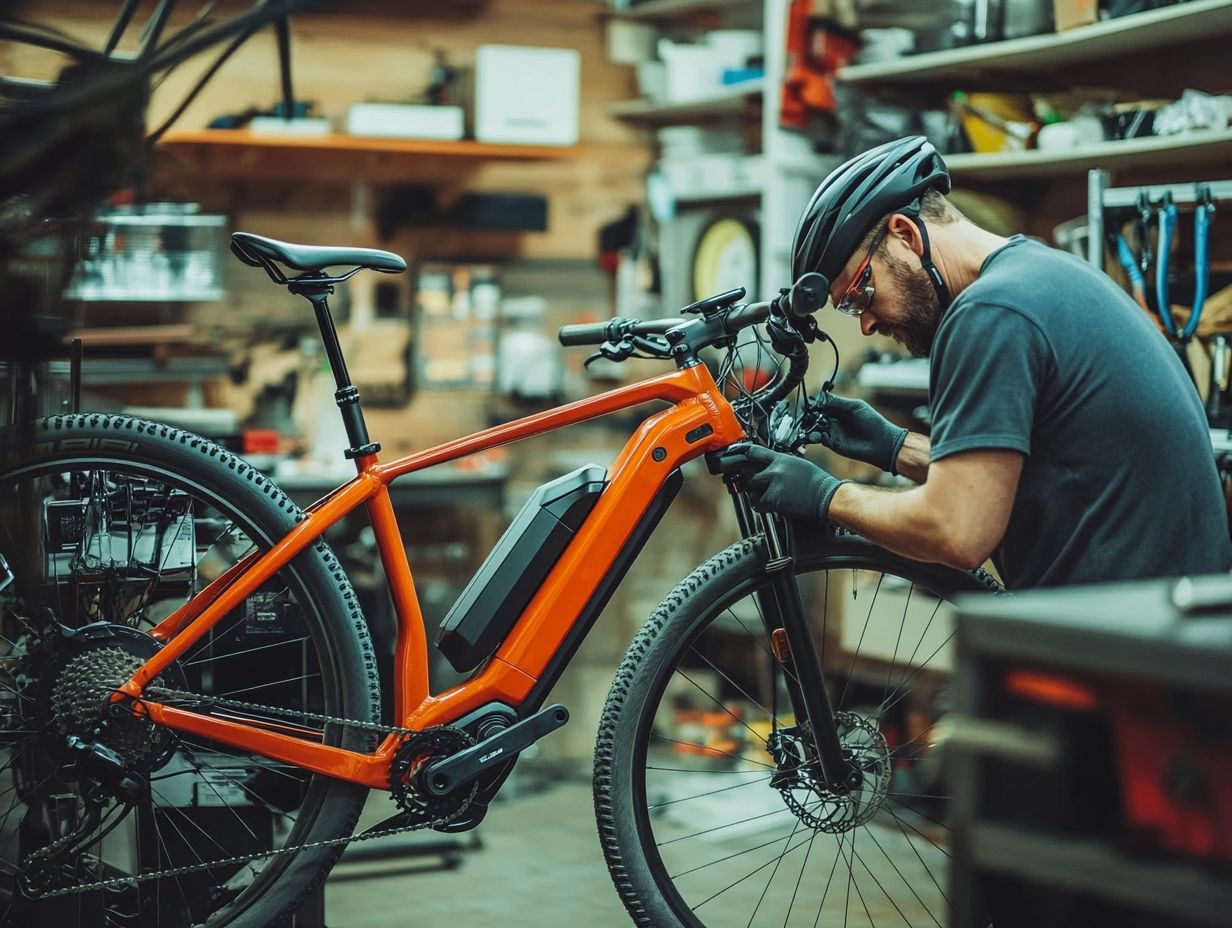
- E-Bikes are popular electric bicycles that are convenient and eco-friendly.
- Common issues with E-Bikes include electrical problems, mechanical issues, and battery concerns such as dead batteries and flat tires.
- Troubleshooting E-Bike problems involves identifying and fixing issues, while regular maintenance can prevent future problems.
What are E-Bikes?
E-bikes, or electric bikes, elevate your cycling experience, seamlessly blending innovative electric motors with traditional pedaling to make every ride enjoyable and effortless. Whether you’re considering an e-trike or a sleek commuter model, there s an e-bike perfectly tailored to your preferences making them an increasingly popular choice for personal transportation.
Brands like Honbike lead the charge in this realm, offering a diverse range of models that cater to everyone from casual cyclists to dedicated commuters.
At their core, e-bikes feature essential components like a powerful motor and a rechargeable battery, both finely tuned to provide just the right amount of assistance based on your input. This delightful synergy between your effort and electric support not only reduces tiredness but also opens the door to longer rides without the usual strain of traditional cycling. However, if you encounter issues with speed, it’s useful to know how to diagnose electric bicycle speed issues.
The eco-friendly nature of e-bikes plays a significant role in reducing carbon footprints, making your choice not just practical but also responsible. You can explore a variety of e-bike types, including:
- Mountain e-bikes for thrilling off-road escapades.
- Commuter models designed for seamless urban travel.
- Folding variants that make storage and transport a breeze.
This versatility amplifies their appeal in today s rapidly changing mobility landscape.
Common Issues with E-Bikes
Electric bikes are truly revolutionary, but they can face various common issues that may affect their performance and reliability. As a rider, you may face challenges such as dead batteries, broken controls that manage speed, water damage, or even flat tires each requiring your attention to ensure a seamless riding experience.
Understanding these potential issues allows you to troubleshoot effectively and maintain the longevity of your e-bike, ultimately enhancing your overall enjoyment. For more detailed guidance, check out our resource on troubleshooting electric bicycle battery issues.
Electrical Problems
Electrical problems in e-bikes can present themselves in several inconvenient ways, often leading to performance issues that can be frustrating. You may encounter common electrical issues, such as broken controls, inaccurate display settings, or charger issues that could leave you with a dead battery or a noisy motor all detracting from your riding experience.
Recognizing these symptoms early is essential for effective troubleshooting, allowing you to address potential problems before they escalate.
If your control system becomes unresponsive, you might find yourself unable to adjust speed settings or engage assistance modes effectively, which can dampen your ride. If your display shows inconsistent mileage readings, it could mislead you about your remaining battery life, risking unexpected breakdowns. And if you hear any unusual sounds from the motor, it may indicate wear or internal issues that require immediate attention. For more information on how to address these problems, check out our guide on troubleshooting electric bicycle electrical issues.
It’s wise to routinely check connections, ensuring all wiring is secure, and examine the battery for signs of damage or swelling, as these can indicate deeper electrical troubles. Additionally, if you encounter unusual sounds while riding, it’s helpful to know how to fix common electric bicycle noise problems. By keeping an eye on these symptoms, you can prolong your e-bike’s lifespan and significantly enhance your overall riding experience.
Mechanical Issues
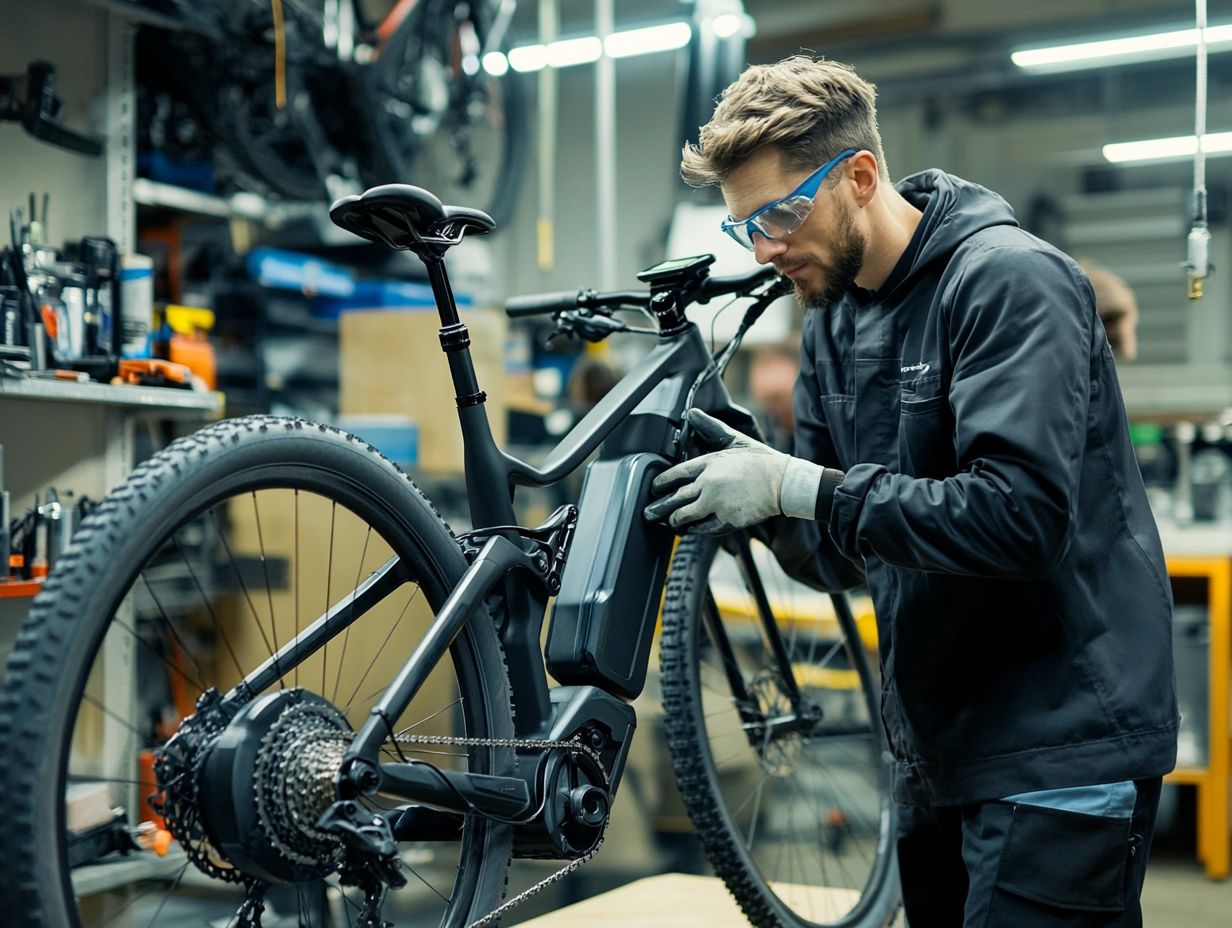
Mechanical issues can present significant challenges for e-bike riders, often leading to performance degradation and safety concerns. Common problems include flat tires, roller bearing failures (which help wheels spin smoothly; their failure can cause rides to be bumpy or unsafe), and damaged wiring. These issues could jeopardize the functionality of your brake sensors, creating an unsafe riding environment. Identifying and fixing these mechanical issues quickly is essential for a great ride!
Recognizing the early signs of these mechanical faults is crucial. For example, a sudden loss of air pressure in your tires not only detracts from your comfort but also affects your control over the bike. Regularly checking tire pressure and inspecting for punctures can help mitigate this issue. You might also face challenges with battery connections; loose or damaged wiring can lead to performance drops. If you encounter issues with your electric bicycle’s display, a guide on troubleshooting display issues can provide valuable insights. A multimeter (a tool used to measure electrical voltage) can help check connections, ensuring that battery terminals are secure to prevent these headaches.
Engaging in preventive maintenance like routine inspections and professional tune-ups can significantly enhance the reliability and safety of your e-bike on the road. Additionally, if you encounter any connectivity problems, learn how to fix electric bicycle connectivity issues. Don’t let small mechanical issues turn into major problems—check your bike today!
Battery Concerns
Battery concerns are crucial for you as an e-bike rider; after all, a reliable power source is the heartbeat of your electric bike. Common issues like dead batteries and charging mishaps can significantly disrupt your riding experience. Being attuned to when to replace your battery and recognizing the signs of charging problems can keep you smoothly gliding along the road without interruptions.
To determine when your battery needs replacing, keep an eye out for indicators such as reduced range, extended charging times, or a swelling battery, which suggests damage. To maximize your battery’s lifespan, steer clear of extreme temperatures and resist the urge to fully deplete it before charging.
Instead, aim to maintain a charge level between 20% and 80%; this simple practice can significantly extend its longevity. Investing in smart chargers with built-in features to prevent overcharging is another way to protect your battery’s health. If you encounter any issues, learn how to troubleshoot electric bicycle range issues. By staying vigilant and following these guidelines, you can ensure a seamless e-bike experience, making every ride both enjoyable and efficient. Take these steps today to keep your e-bike ready for your next adventure!
How to Troubleshoot E-Bike Problems
Troubleshooting e-bike problems demands a systematic approach, enabling you to identify and address issues with precision, ultimately enhancing your riding experience. Whether you’re facing minor adjustments or more significant repairs, having a solid grasp of common issues will greatly aid you in the troubleshooting process.
Empowering yourself with DIY maintenance tips not only allows you to resolve problems independently but also helps extend the lifespan of your electric bike, ensuring you enjoy every ride to its fullest. For example, learning how to identify electric bicycle performance issues can be invaluable.
Tips for Identifying and Fixing Issues
Identifying and resolving issues with your e-bike can be straightforward when you follow targeted tips and guidelines that address common electrical and mechanical problems. Begin by checking your display settings for any error messages that might signal charging issues or battery malfunctions these are often the first indicators of underlying problems. By addressing these matters promptly, you not only ensure a smooth riding experience but also save both time and money on repairs.
Regular visual inspections are essential; take a moment to check for loose wires, corroded connectors, or signs of wear on your tires and brakes. If you hear any unusual sounds during your rides, it s wise to inspect the drivetrain immediately, as these mechanical issues might arise from a worn chain or misaligned gears.
Should your troubleshooting efforts not yield a solution, don’t hesitate to seek help from a professional repair shop. Their expertise can tackle more complex challenges effectively. Remember, maintaining your e-bike isn’t solely about fixing problems; it’s about keeping it in optimal condition. For more insight into common issues, check out the most common electric bicycle problems explained for all the adventures that lie ahead.
Preventative Maintenance for E-Bikes
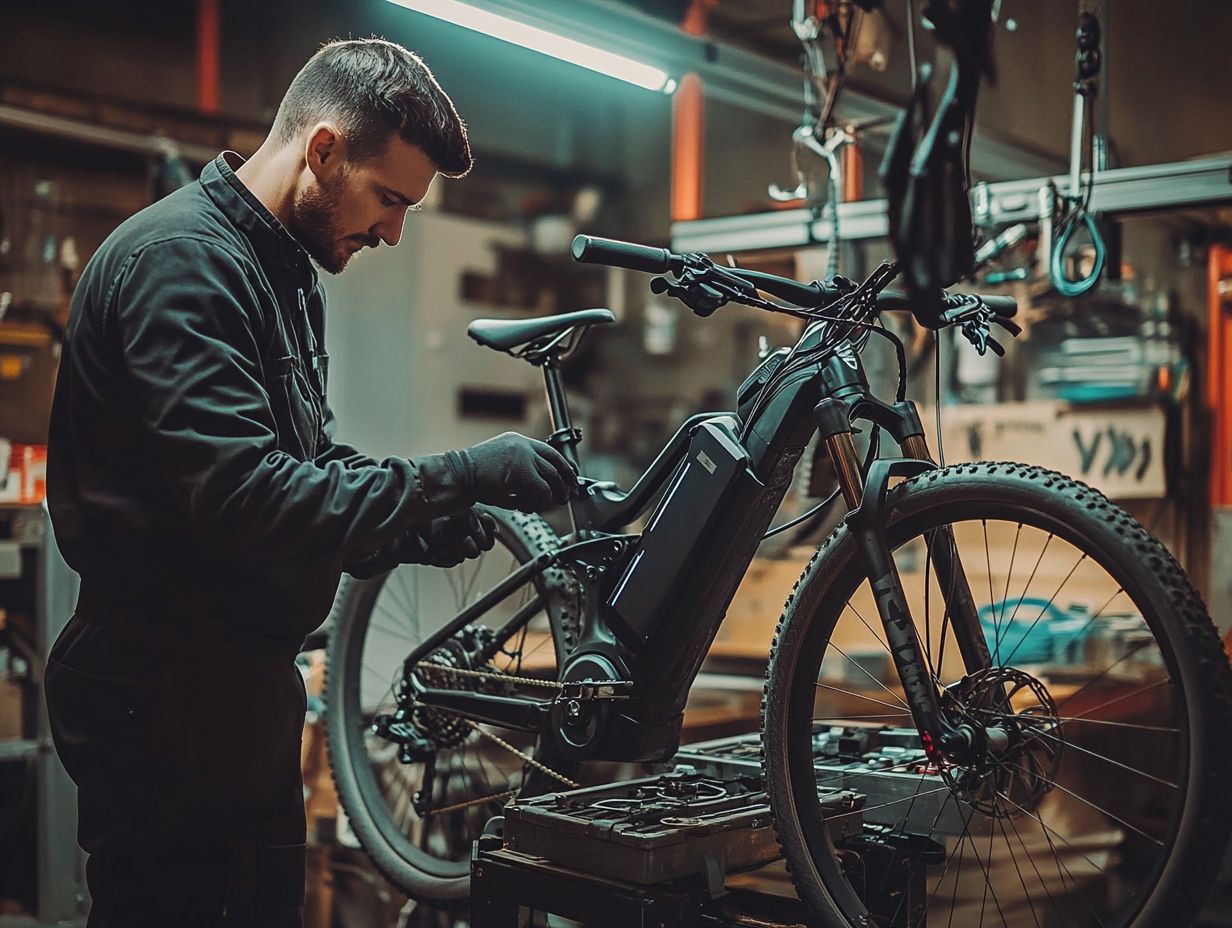
Preventative maintenance for your e-bike is essential to keep it in peak condition. This provides you with a seamless riding experience that enhances both performance and longevity.
By establishing a regular maintenance schedule, you can pinpoint potential issues before they escalate into major problems. This ensures your e-bike remains at its best. For guidance on common electric bicycle issues, simple DIY maintenance can help your e-bike last longer and allow you to enjoy every ride with confidence.
Steps to Keep Your E-Bike Running Smoothly
To ensure your e-bike operates smoothly and requires minimal maintenance, it is vital to adopt proactive measures that address both mechanical and electrical concerns. Regular inspections of the battery, brakes, and wiring can help you avert issues that might disrupt your riding experience.
Embracing DIY maintenance not only empowers you as a rider but also saves you from potentially costly repair bills.
- Start by routinely checking the battery. Ensure it is charged and free from corrosion; a healthy battery helps your e-bike run well.
- Next, examine the brakes for any signs of wear and tear. Adjust them as needed to maintain your safety.
- Check the control systems for loose connections or damaged wires that could compromise functionality.
Cleaning and lubricating the chain regularly extends its lifespan and enhances your overall ride quality. Keeping the tires inflated to the recommended pressure improves handling and efficiency.
Frequently Asked Questions
What are the Most Common E-Bike Issues?
As e-bikes become more popular, it is important to know what common issues may arise. Here are some frequent problems and how to address them.
What should I do if my e-bike won’t turn on?
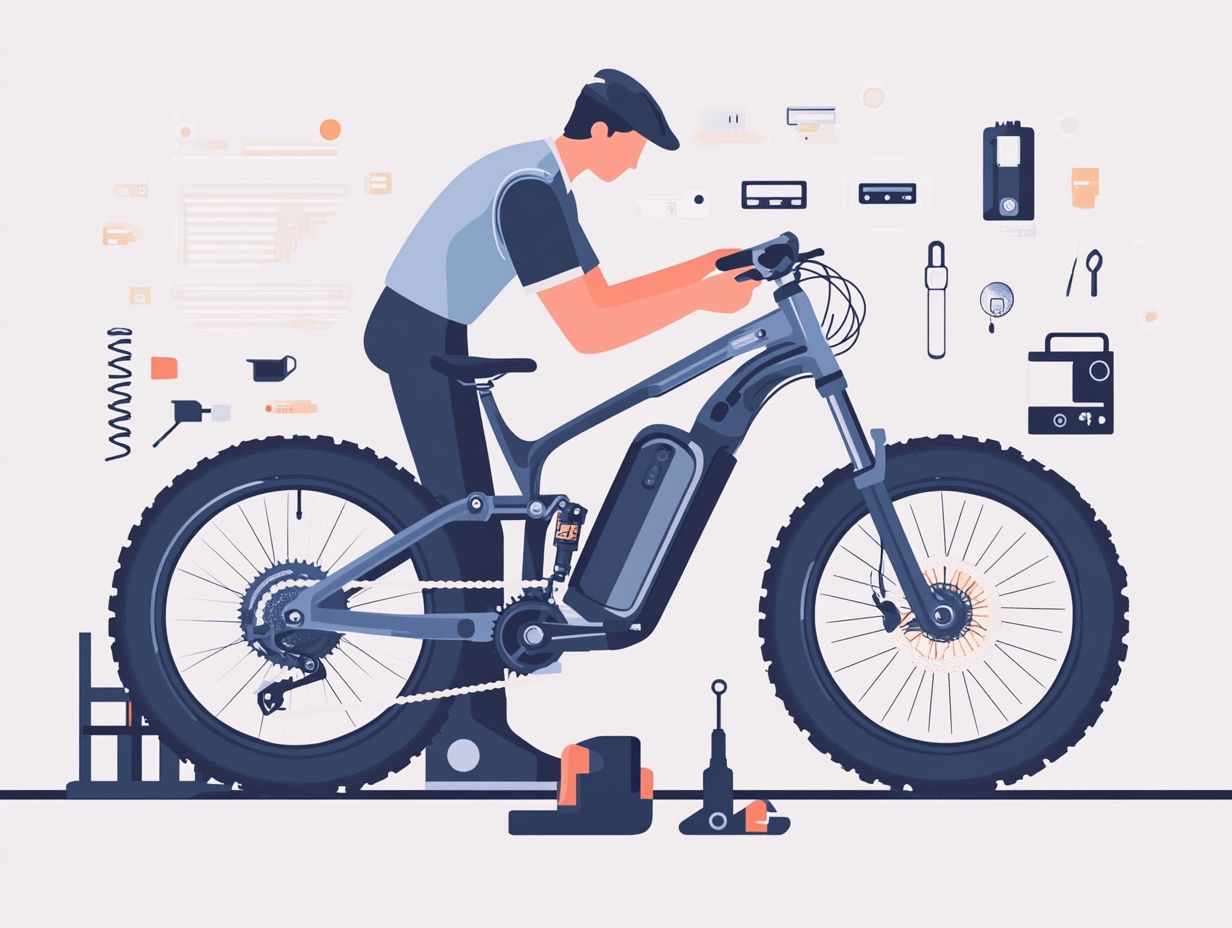
If your e-bike won t turn on, check if the battery is charged. If it is and the bike still won t start, there might be a problem with the motor or wiring. Contact the manufacturer for assistance.
Why is my e-bike making strange noises?
Strange noises from your e-bike can indicate different issues. It could be a loose chain, worn brake pads, or a problem with the motor. A loose chain means it isn t properly tightened and can cause problems. Have a professional inspect your bike to determine the cause of the noise and make any necessary repairs.
What should I do if my e-bike is not providing power?
If your e-bike is not providing power, first check the battery to ensure it is charged. If it is charged but the bike still does not provide power, there may be an issue with the motor or wiring. Again, contact the manufacturer for assistance.
How often should I service my e-bike?
Regular maintenance is crucial to keep your e-bike in top shape! We recommend servicing your e-bike at least once a year or every 500 miles, whichever comes first.
What should I do if my e-bike has a flat tire?
Flat tires are a common issue with any bike, including e-bikes. If you have a flat tire, replace or repair it as soon as possible. You can either take your e-bike to a bike shop for repairs or learn to change a flat tire yourself.
Can I ride my e-bike in the rain?
E-bikes are typically designed to withstand normal weather conditions, including light rain. However, avoid riding in heavy rain or submerging your e-bike in water. If you get caught in heavy rain, dry off your e-bike and its components thoroughly afterward to prevent rust and damage.
Don t wait until it s too late! Regular checks will save you time and trouble. Take care of your e-bike today and ensure many more enjoyable rides!

